Romania & Moldova Classical Tour
Visit Romania and Moldova, two countries who shares the same language and traditions, preserved and unattended trough the history!
Explore medieval fortifications and cities, religious settlements resembling the long Christian faith, marvelous and scenic landscapes of the Carpathian Mountains, as well as urban testimonies of the Soviet communist time!
Departures: all year
Duration: 15 days / 14 nights
PRIVATE TOUR: Private / small group
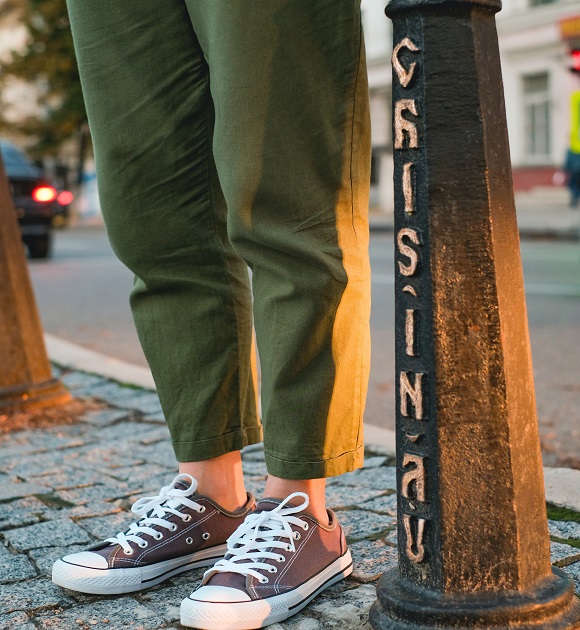
Day 1: Chisinau
Arrival to Chisinau airport. Meet the guide at the airport and transfer to the hotel. Accommodation for 2 nights in Chisinau at 4* star hotel.
Day 2: Chisinau - Castel Mimi Cellars - Chisinau
Breakfast. Short drive outside of Chisinau to Castel Mimi, an impressive chateau built at the beginning of the XXth Century by an emblematic politician and wine maker of Moldova, Constantin Mimi, the last governor of Bessarabia during Russian Empire. The tour includes a captivating walk through the castle’s cellars, gardens, courtyard and the production area of the winery. Castel Mimi’s underground galleries are more than a century old. There are several wine collections produced here (Reserve, Classic, Animaliens, Select, Ice Wine), one could choose for an interesting tasting experience. Wine tasting and lunch.
Return to Chisinau and walking tour in the afternoon.
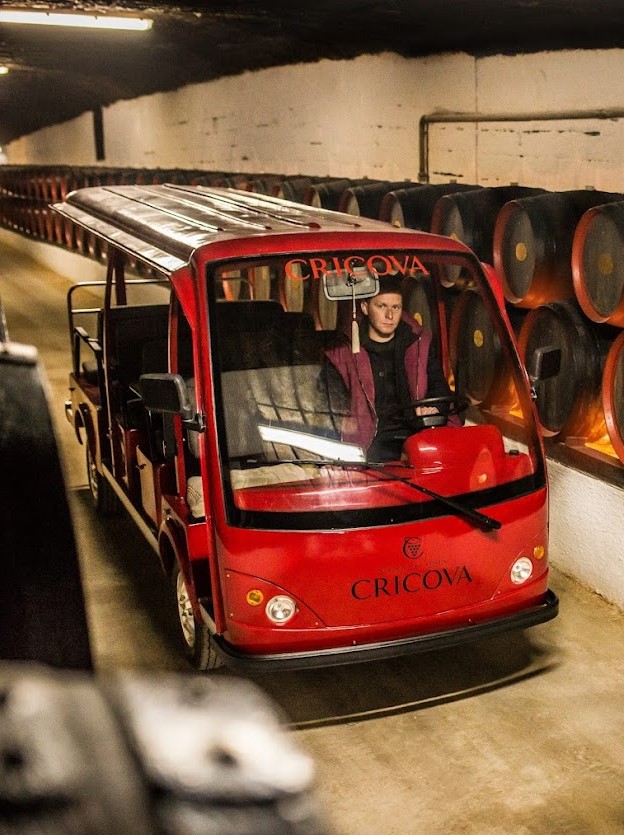
We will begin the tour towards some famous wine-making places!
Cricova cellar represents the biggest and one of the most impressive wine cellars from Europe with a history back from 1952, boasting 120km of labyrinth roadways. As of 2008, the collection consists of over 70 silver, gold and Grand Prix awards. Among the large variety of wines, Cricova makes a unique sparkling red wine, kodrinskoie-sparkling, made from Cabernet Sauvignon stocks and marketed as having a 'rich velvet texture and a blackcurrant and cherry taste'. The method used is in accordance with the classical French method, purportedly invented centuries ago by the monk Dom Pierre Perignon - 'methode Champenoise". Visit includes wine-tasting.
Orheiul Vechi. Overlooking the Raut River, this open-air complex features fortifications, baths, caves, ruins, and monasteries – all which date back as late as the Dacian tribes of 2000 years ago. The ancient monuments date from various periods including the Tatar and Mongol invasions, the 10th century BC, and more recently the occupation of the Golden Horde in the 14th century. Traditional lunch in the village.
Overnight in Soroca.
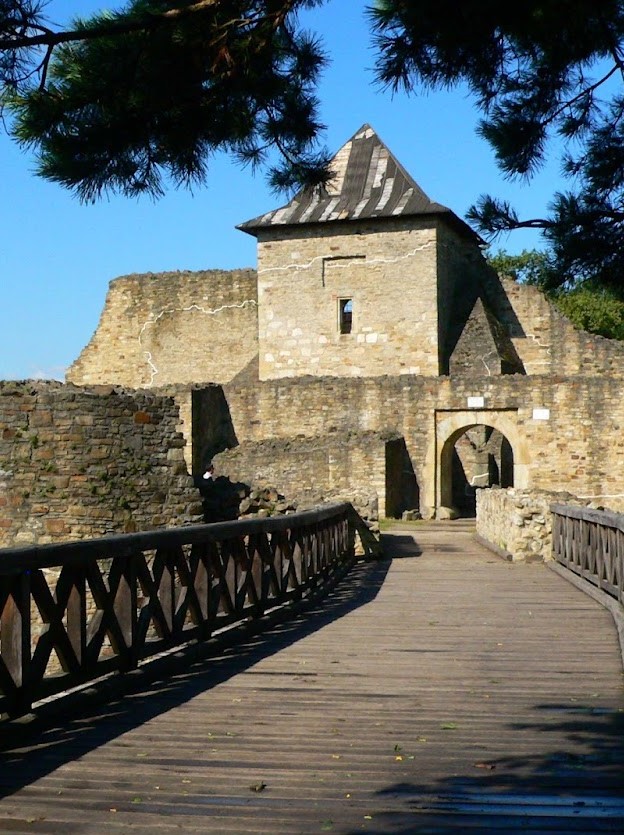
Soroca. Build in wood in 1499 by the great ruler of Moldova, Stephen the Great and transformed into the actual stone and brick structure by his son, Petru Rares, this fort has an unusual round shape, an unique monument of the military architecture of Europe. Soroca represents the only citadel in republic of Moldova, that is preserved until today.
Leave for Romania and reach Suceava city, the former capital of the historical medieval region of Moldova
Visit Suceava citadel, the unconquered fortress of Moldova, with a history since the XIV century; royal residence of several leaders, including Stephen the Great, the citadel represents a symbol of resistance against the Ottoman rule.
Accommodation in Suceava.
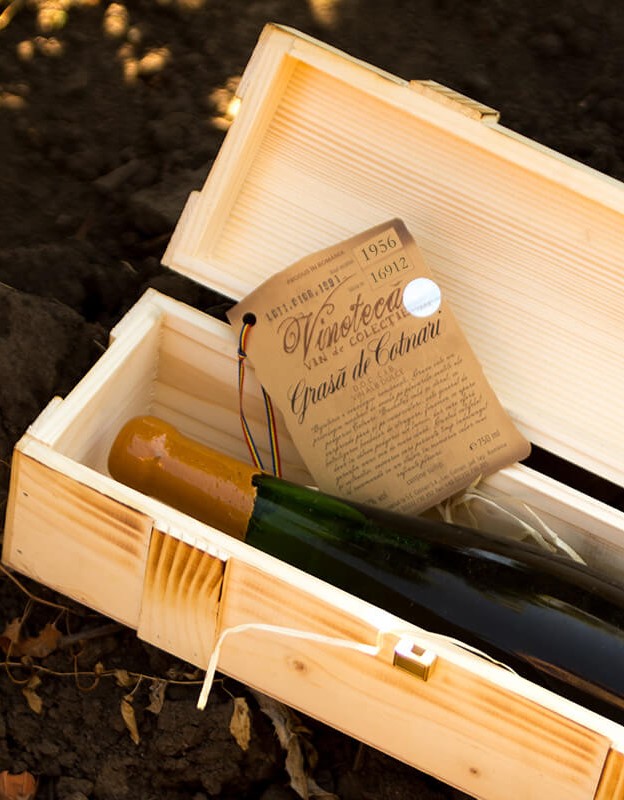
The vineyard culture at Cotnari is dated back since the 1st century BC. The accounts become important during the reign of the most important rulers of Moldova from the XV-XVI centuries. Today, Cotnari wines have exceptional qualities obtained by limiting average grape production in the attempt to choose quality at the expense of quantity. Spread over 1,700 hectares of vineyards through high-performance agricultural work, the company produces unique (mostly) white varieties as the medium-sweet "Grasa de Cotnari" who won a large number of distinctions in international and national wine competitions, as well as "Tamaioasa Romaneasca", "Francusa", or the famous roze "Busuioaca de Bohotin". Wine-tasting and lunch.
Afternoon we will discover the beautiful Agapia Monastery. It is the only monastic settlement in the country that bears the name of “Christian love”, which comes from the Greek “agapis”. The monastery is famous around the world due to its interior frescoes painted in 1858 by the great Romanian painter Nicolae Grigorescu (one of the founders of modern Romanian painting).
In the evening, we will reach our final day stop – Gura Humorului, where we will be accommodated.
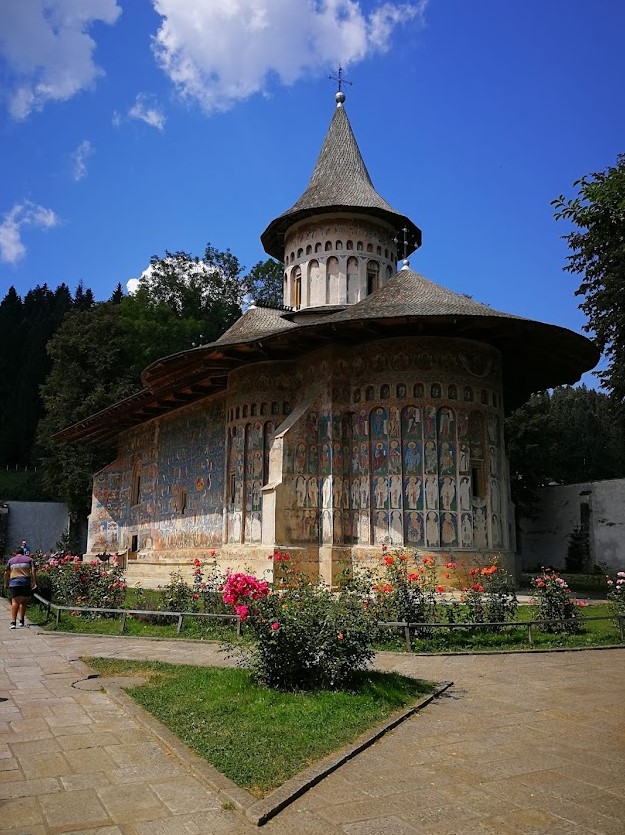
Breakfast in the morning, then we will visit three of the most famous and beautiful Painted Monasteries of Bucovina (UNESCO protected cultural sites):
Sucevita (founded in 1581 by Gheorghe Movila, Bishop of Radauti, Sucevita was the last of the 22 painted churches of Bucovina and has the largest number of painted images; it was a princely residence as well as a fortified monastery),
Moldovita (built by Petru Rares in 1532, the predominantly gold and deep blue paintings on the exterior walls were completed in 1537; the large and vivid Siege of Constantinople highlights the frescoes, while another stunning representation depicts the Tree of Jesse, representing Christ’s genealogy, a wide-spread iconographical theme in Europe during the Middle Ages)
Voronet (1547, surnamed “The Sixtin Chapel of the East", this "jewel of Bucovina" was built by Romanian great ruler Stefan the Great in 1488, and it is well known for its frescoes with predominant blue color - Voronet blue, that depict a fairy-tale world, painted on a "piece of heaven").
Today, a special visit is dedicated also to the Museum of Painted Eggs “Lucia Condrea” in Moldovita. The Easter, the most important and the greatest Christian holiday of the year has always been worshiped by the Romanians as a day of holly joy. Among all Romanian customs, the one of painting eggs for Easter is by for the finest and mildest and maybe nowhere else like in Bukovina the egg isn’t looked upon and considered with so much love the custom of painting it is raised at a high artistic level. In Moldovita (Bukovina) this tradition is at home. Member of the Artistic Union of Romania and having a lot of prize within the most important exhibitions of art in the world, Lucia Condrea is an unique artist and the eggs painted by her are the reflection of a gift with which she is endowed by God to make the other people happy.
Another interesting site we will enjoy today is Marginea village, famous for its black pottery. Visit to the workshop included.
In the evening, return back to Gura Humor and overnight in the same hotel.
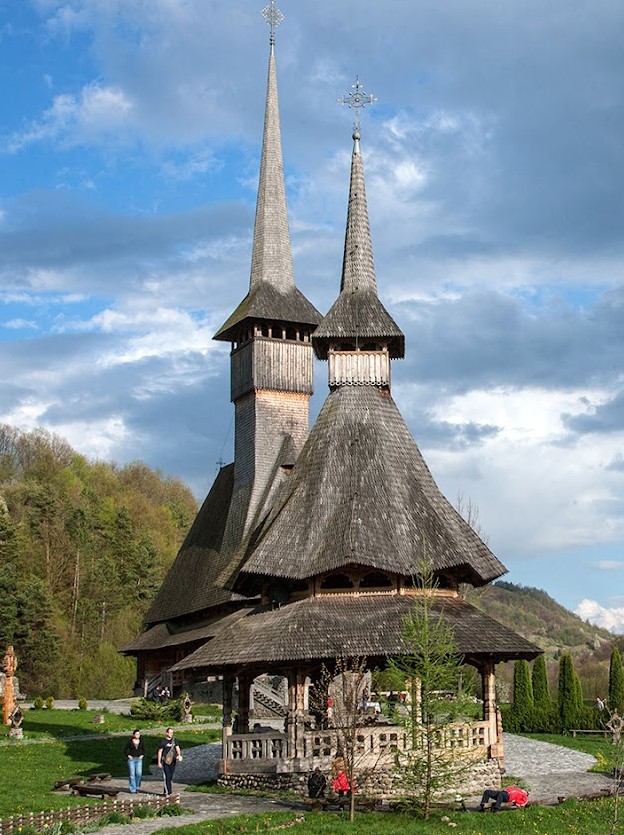
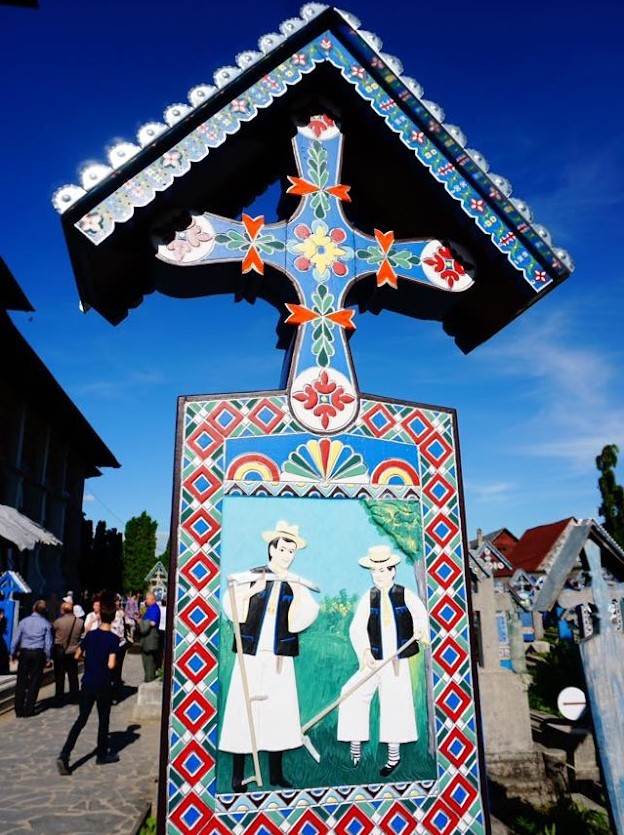
Breakfast in the morning. Today we leave Bukovina and move further to Maramures County.
Continue our way via Campulung Moldovenesc, Iacobeni, Vatra Dornei, Tihuța Pass and Bistrita Nasaud. On the way a stop will be made in Tureac for a visit to Bacea family to discover the mastery of one of the few furriers specialized in fine embroidery on sheepskin.
Reaching Maramures region, we can visit also Barsana Monastery, one of the highest wooden churches in the world with splendid gardens, and Toader Barsan’s house, a local wood carver who took part at the Smithsonian World Festival in Washington, famous for the wonderfully carved wooden gates.
In the afternoon we reach Sapanta Village, famous in the whole world for "The Merry Cemetery". Ancient beliefs viewed death as a beginning, not as an end, and this faith is reflected in the carvings in the town’s unique Merry Cemetery. Blue wooden crosses feature a carved scene and humorous epitaphs that endeavor to capture essential elements - both the good and the imperfections - of the deceased’s life.
In the evening arrival and accommodation in Sighetu Marmatiei.
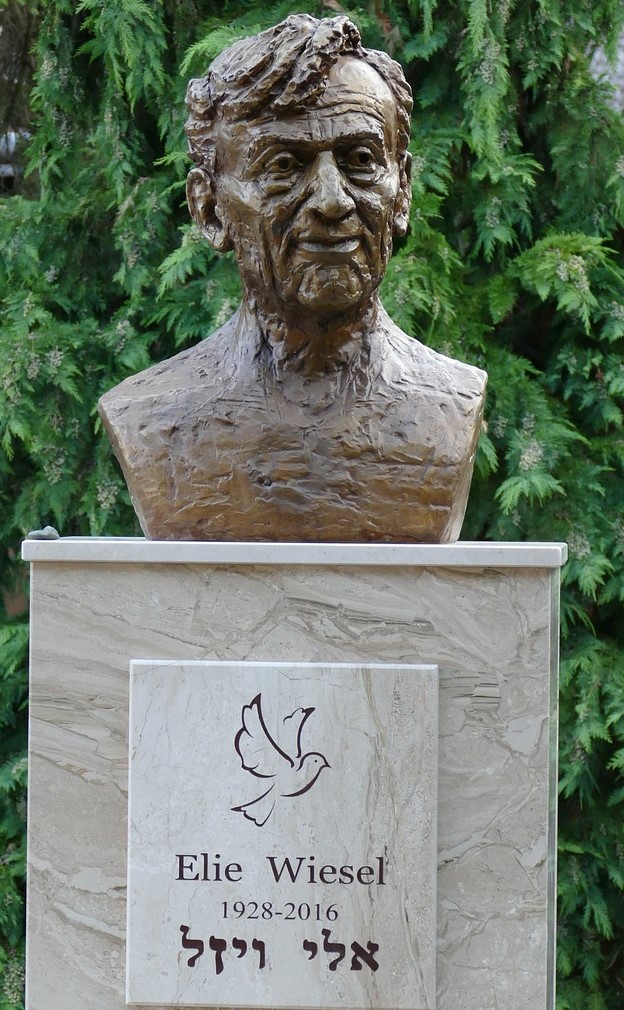
After breakfast, we discover the small town of Sighetu Marmatiei, where we stop at the “Memorial to the victims of Communism”, located in the building of the former Sighet Prison used by the communist regime to silence its opponents, in the 50’s. We will continue your walking tour on the streets of the village admiring the wooden gates, the wooden houses, the local architecture and the locals.
Another visit will be to The Elie Wiesel Memorial House - The Museum of the Jewish Culture in Maramures in Romania. Sited in the house where famous Nobel Prize winner Elie Wiesel was born, the museum uses devotional objects, documents and photos to evoke the memory of the Jews of Maramures killed in concentration camps: 90% died in Auschwitz; the survivors, including Elie Wiesel, emigrated to Israel. The Elie Wiesel House is today a place of pilgrimage for thousands of visitors interested in its famous namesake.
Then we drive from Maramures Region towards Cluj-Napoca, the largest city of Transylvania. On the way we will also have a stop in Barsana village which hosts one of the 7 UNESCO wooden churches from Maramures. Built in 1770 on the site of an older church, it has preserved its original form. The painting, with post-Byzantine influences, made in 1780, was very well preserved. On all the interior walls classical scenes from the Bible are represented. In the patrimony of the church there are also 14 wooden icons made during the 17th and 18th centuries.
Overnight in Cluj Napoca.
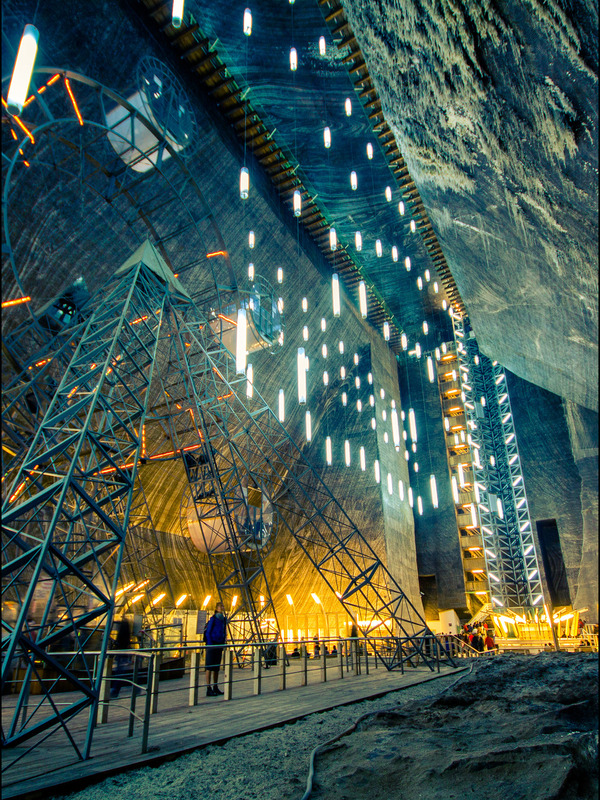
Breakfast in the morning, then we head 20 km from Cluj town to Turda Salt Mine, a real history museum of salt exploitation. Located in Turda, the 2nd largest city in Cluj County, Transylvania, Turda Salt Mine is a must-see Romanian tourist attraction. The Salt Mine (which dates as far back as the 17th century) has been transformed into an incredible underground theme park.We will head down about 400-feet before reaching the submerged wonderland, and once inside, we will find an amphitheater, a bowling alley, an underground lake with paddle and row boats, and even a Ferris wheel.
We return to Cluj and do a sightseeing tour of the most important sites: Union Square, with shops, cafés and restaurants and the monumental St Michael’s Cathedral, dating from 14th century. Next to the cathedral, is the imposing equestrian statue of Mátyás Corvinus (raised in 1902) tramples the crescent banner of the Turks underfoot. His formidable Black Army kept the Kingdom of Hungary safe from banditry and foreign invasion for much of his reign. Next we visit The Pharmacy Museum that displays a beautiful collection of ancient prescriptions, jars and implements, as well as Baroque furnishings and glass cabinets. Down in the pharmacy basement something akin to a medieval dungeon – is the old laboratory, complete with an assortment of tools, pestles and containers. If we have enough time we will visit the Ethnographic Museum of Transylvania, the oldest ethnographic museum in Romania. It was founded on 16 June 1922 as a real science museum and managed to hoard in the eight decades of activity over 120,000 documents of traditional culture. Our tour of Cluj will end with a walk around Avram Iancu Square, where is located The Orthodox Cathedral inaugurated in 1933 to celebrate the Romanians’ triumph in Transylvania.
Accommodation in Cluj Napoca, in the same hotel.
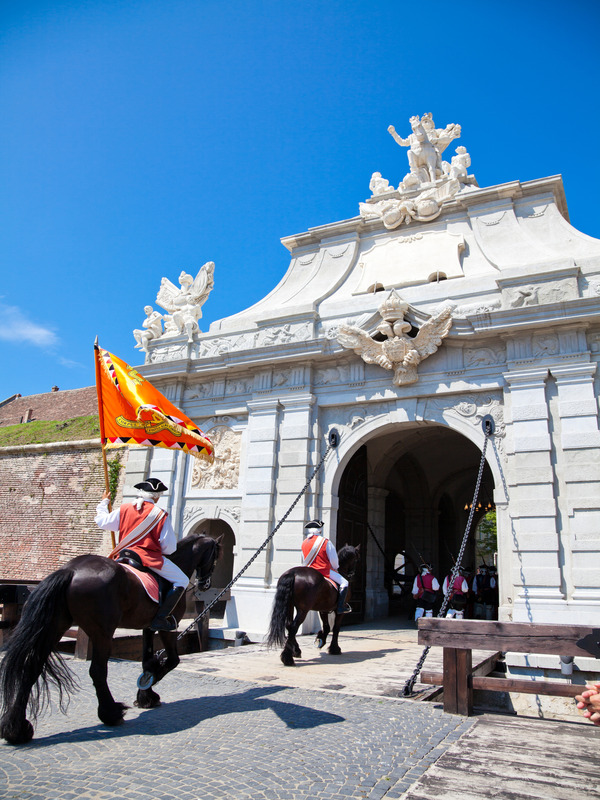
After breakfast, we continue our way to Alba Iulia - the capital of the independent Principality of Transylvania, where the Union Act of the Romanian Principalities was signed in 1918. It is also known under the Latin name of Apulum, the Hungarian name of Gyulafehérvár and the German name of Karlsburg/Weißenburg.
We will visit the Alba Carolina Citadel - the symbol capital of the Romanians. The Citadel is the heart of the town of Alba Iulia, and was design to be the main defensive point of Transylvania, a militay center and arm storage facility. It is composed of 7 bastions confering it the star shape characteristic to such citadels. Visit also the Roman Catholic Cathedral, the most valuable monument for the medieval architecture in Transylvania, inside which can be found the tomb of Iancu de Hunedoara (John Hunyadi). We should not forget Muzeul Unirii (the Union Museum), the place where the Union Act between Transylvania and Romania was signed on 1st December 1918.
At night we arrive in Sibiu for accomodation.
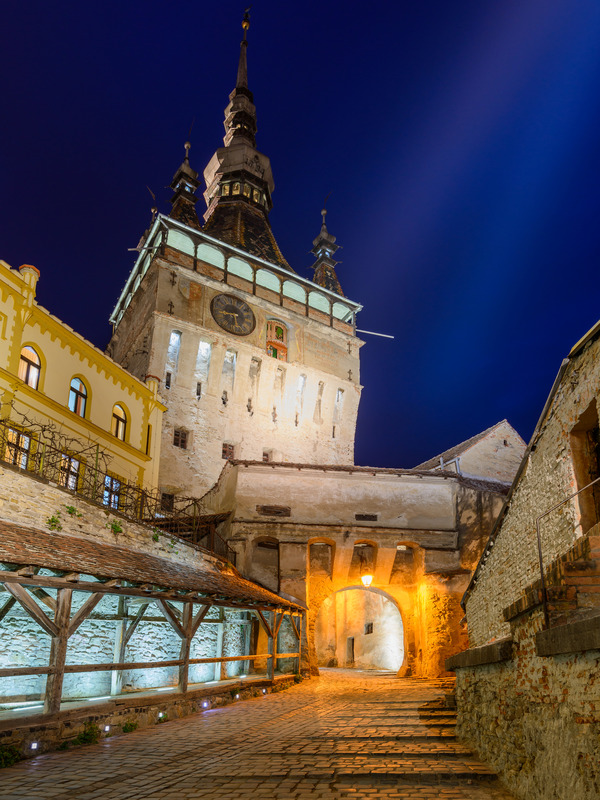
Today you will start with discovering Sibiu. The tour includes the most interesting sights and architectural buildings in the city.
The beautiful Old Town was mostly built in the late medieval period by the German merchants who were encouraged to settle in and around Sibiu. It’s in excellent condition, having escaped modern encroachments, and having been thoroughly renovated to be European Capital of Culture in 2007. Within Old Town, the Upper Town, containing most of the historic sights, is ranged around three squares: Piata Mare (the Great Square), dominated by the Jesuit Cathedral, Piata Mica (the Little Square) has most of the bars and cafés, and Piata Huet is an attractive Gothic conglomeration around the Lutheran Cathedral. The Lower Town is home to many charming buildings and cobbled squares.
After this, we continue our way to Sighisoara citadel – Europe’s best preserved medieval town! One of the most beautiful towns in the heart of Transylvania, the whole medieval citadel is today a part of UNESCO World Heritage. The Clock Tower (Council Tower) – one if its most famous attractions, the Church on the Hill, the Scholars Stairs, The Monastery Church, the towers of the citadel (originally fourteen), The Shoemakers Town, the Tailors Tower, the Tinsmiths Tower, the Venetian House and Vlad the Impaler (Dracula) House are only a few of the highlights.
Accomodation for the night in a medieval hotel in Sighisoara.
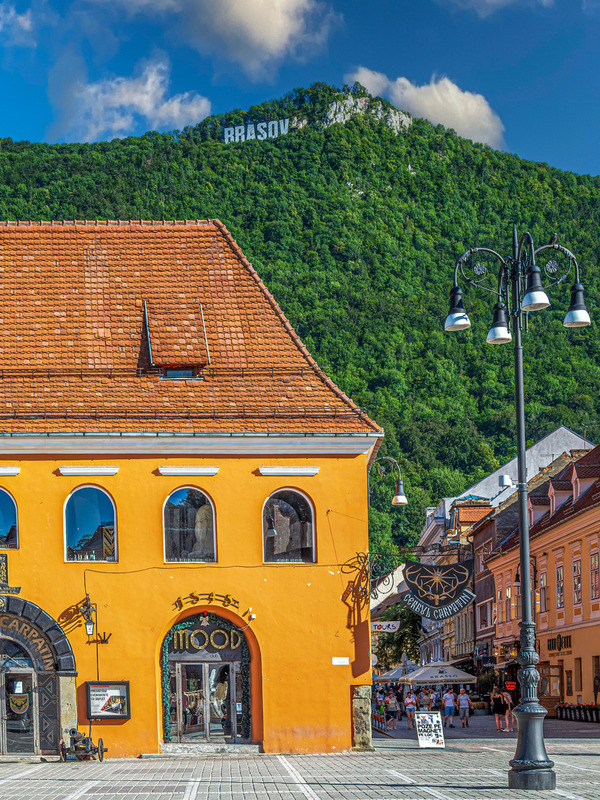
Breakfast in the morning, then we will discover together the city of Brasov. We will visit the medieval part of the city with: The Black Church, The Town Hall, The Black Tower, Ecaterina’s Gate and the Rope Street – the narrowest street in Europe.
Brasov is home to one of the the narrowest streets in Europe. The Rope Street (Strada Sforii) is approximately four feet wide; it connects Strada Cerbului with Strada Poarta Schei. This street was initially used as an access route by firefighters.
Brasov was founded, in 1211, by the Teutonic Knights, on an ancient Dacian site. In the 13th-Century Brasov was settled by the Saxons and shortly became one of Transylvania's seven walled citadels Siebenburgen.
The location of Brasov, at the intersection of trade routes linking the Ottoman Empire and western Europe, together with friendly tax regime, allowed Saxon merchants to obtain considerable wealth and exert strong political influence in the region. This was also reflected in the city's name, Kronstadt (German) or Corona (Latin), meaning the Crown City.
Strong fortifications defending towers were erected and maintained with funding provided the town's craft guilds.
In the evening you will have free time to stroll and do shopping, and you will have accomodation in the city center.
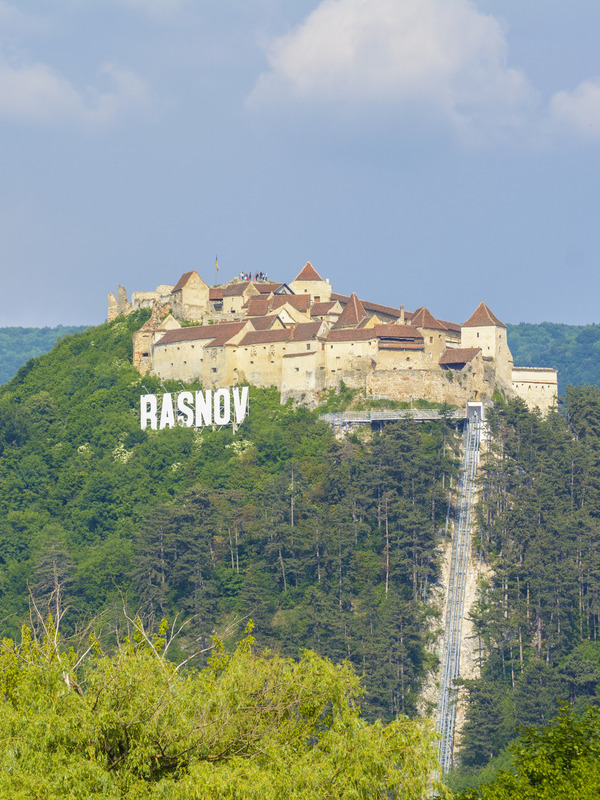
This day is dedicated to Bran Castle, well known as Dracula's Castle.
The castle came to be connected with the legend of Dracula the Vampire. It was built between 1377 and 1382, on a 60 m high rock with a strategic, military and commercial purpose. The building has four towers positioned at the four cardinal points. The walls are made of stone blocks, the rooms and narrow corridors constitute a mysterious labyrinth of ghostly nooks and secret chambers, whilst in the inner courtyard there are artesian wells, connected to an underground network. The castle had both a military and a customs point purpose.
After this, we will also visit Rasnov Citadel nearby, and in the evening return to the same hotel in Brasov.
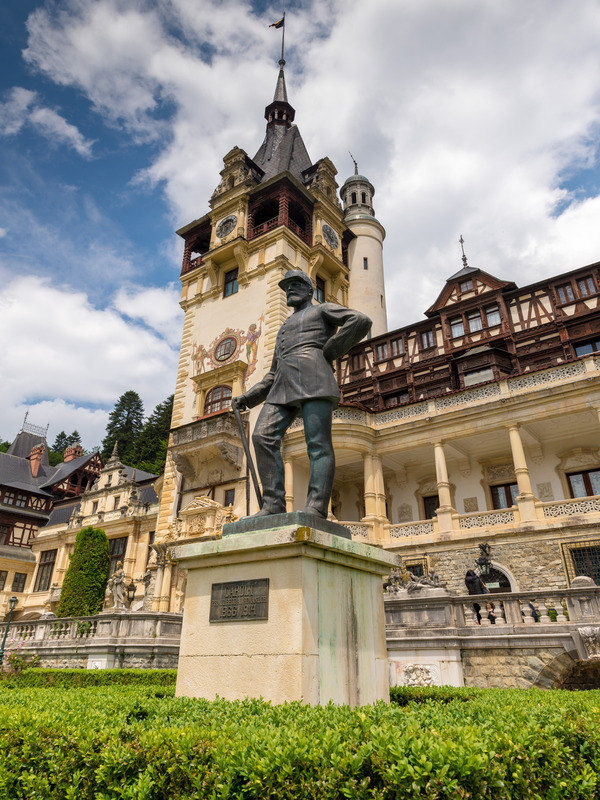
Another two beautiful castles for today! Be ready to drive through the beautiful mountainside on Prahova Valley towards Cantacuzino and Peles castles.
First one on our way is Cantacuzino Castle, situated in Busteni (recently known as the place where Tim Burton's "Wednesday" series has been filmed) - it is a prominent figure of the Neo-Romanian style. The magnificent castle of the aristocratic Cantacuzino family, with a history dating back more than 1000 years to the Roman Empire, was chosen as the Nevermore Academy of the Adams family and is now a fine dining restaurant and home to an art gallery.
We will be visiting today the magnificent Peles Castle, situated in Sinaia, with its fairytale turrets and pointed towers nestling in the Carpathians. It is considered by many to be one of the most beautiful castles in all Europe. Indeed it was the first castle in the world to have central heating and electricity! It is also the final resting place for several Romanian monarchs including King Carol I, who died here in 1914. Throughout its history, the castle has played host to some important personalities, from royalty and politicians to artists. These have included Kaiser Franz Joseph of Austria-Hungary. Artists such as George Enescu, Sarah Bernhardt, and Jacques Thibaud often visited the castle. In recent times it has received guests such as Gerald Ford, Richard Nixon, Muammar Gaddafi, Yasser Arafat and many more. Our visit here will include the incredible weapons room.
In the afternoon we drive towards Bucharest and spend the night there.

Breakfast in the morning, then free time at your disposal to enjoy the city as you wish, have a walk, make some shopping, until your departure flight. Transfer to the airport for your departure flight and end of the tour.
PRIVATE TOUR by car/minivan
*ask for a quotation depending on the number of people travelling together

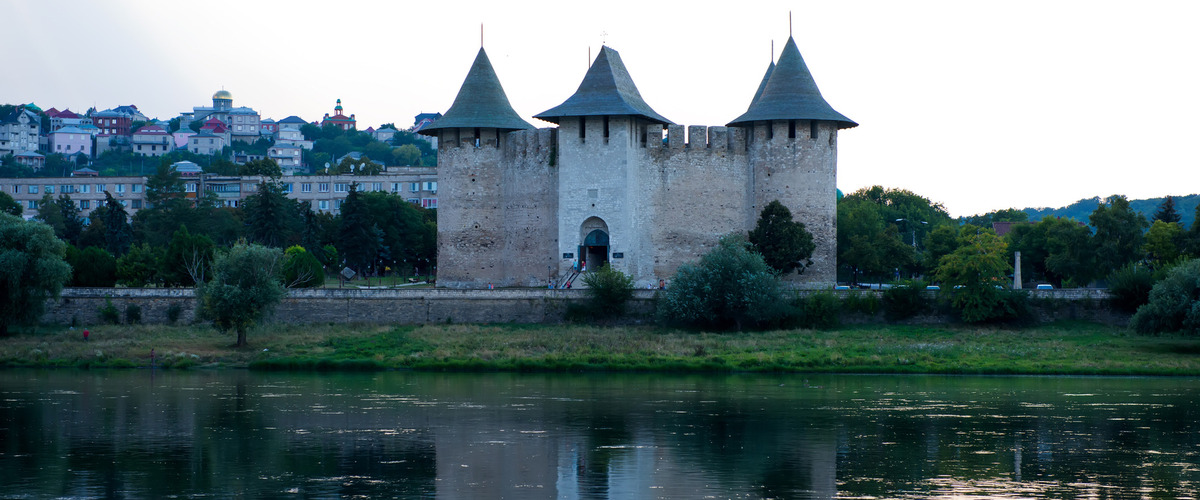

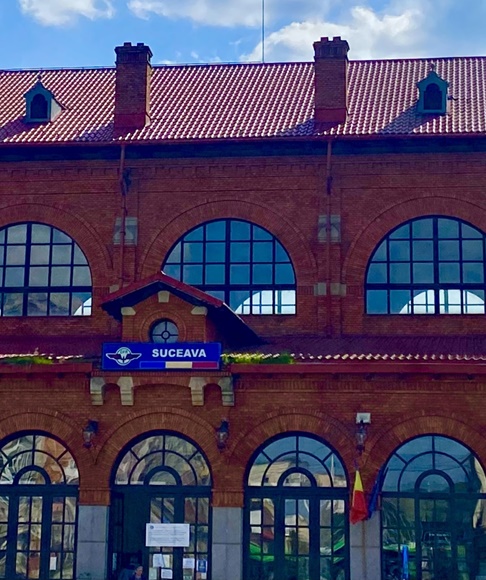
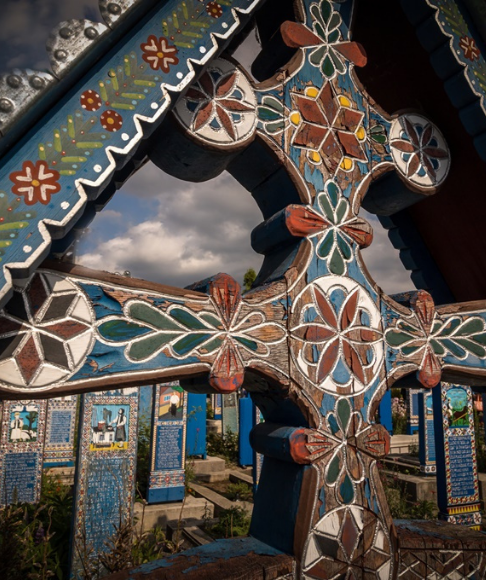
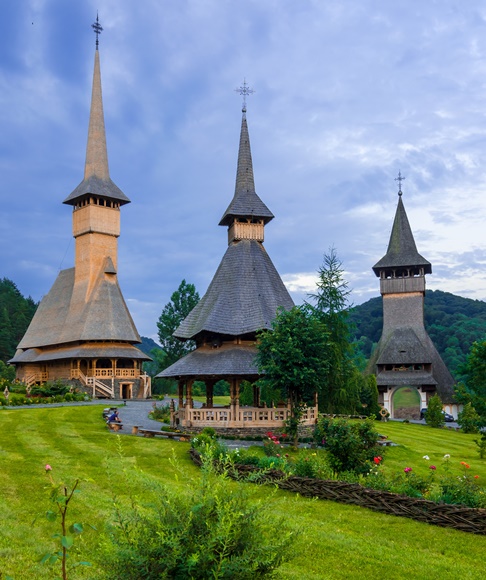

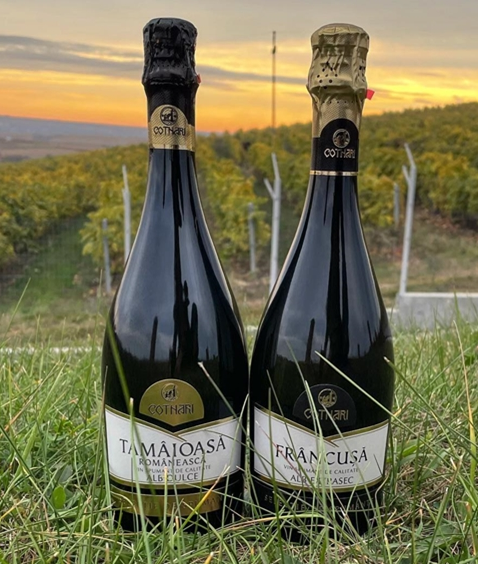
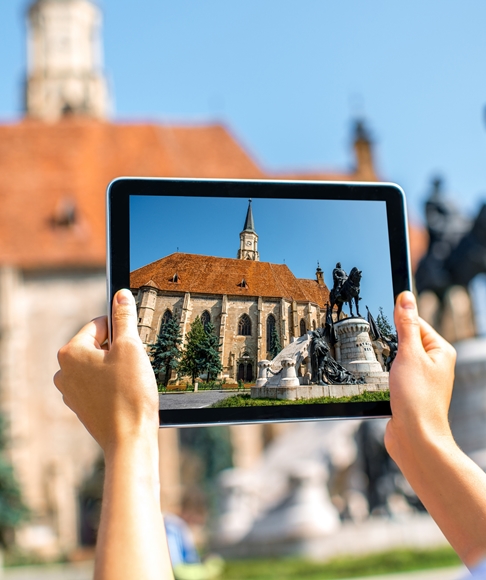
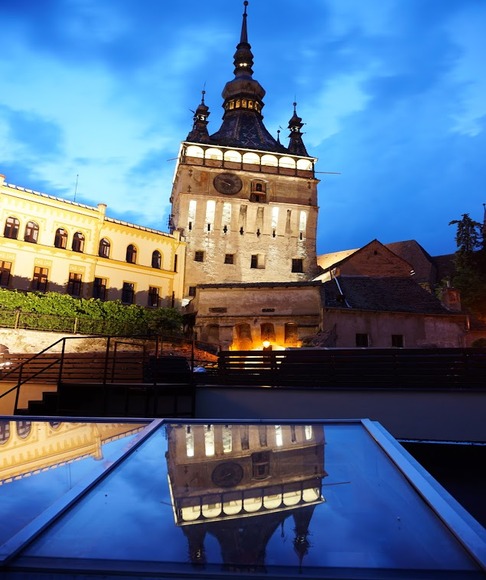


.png)



